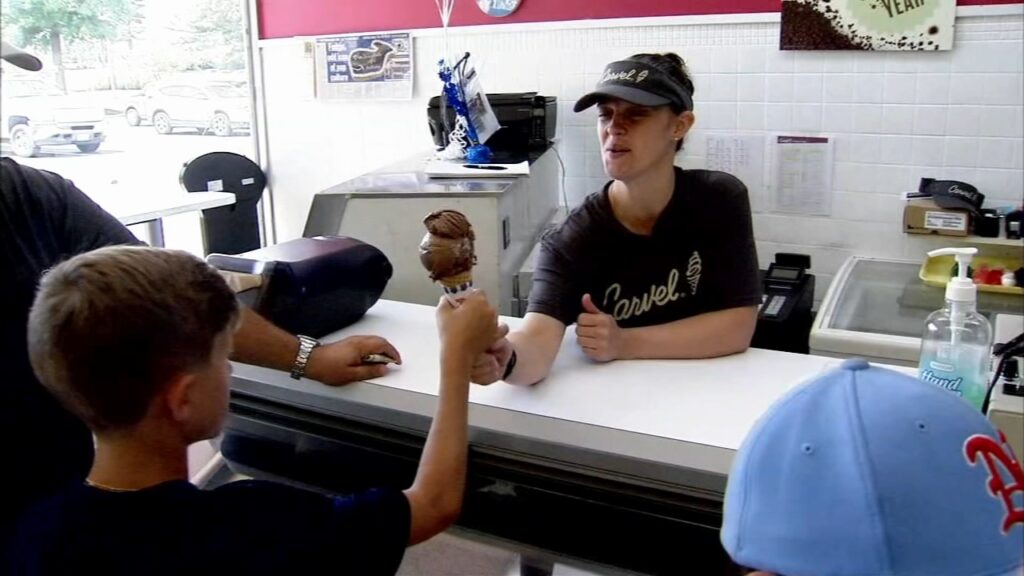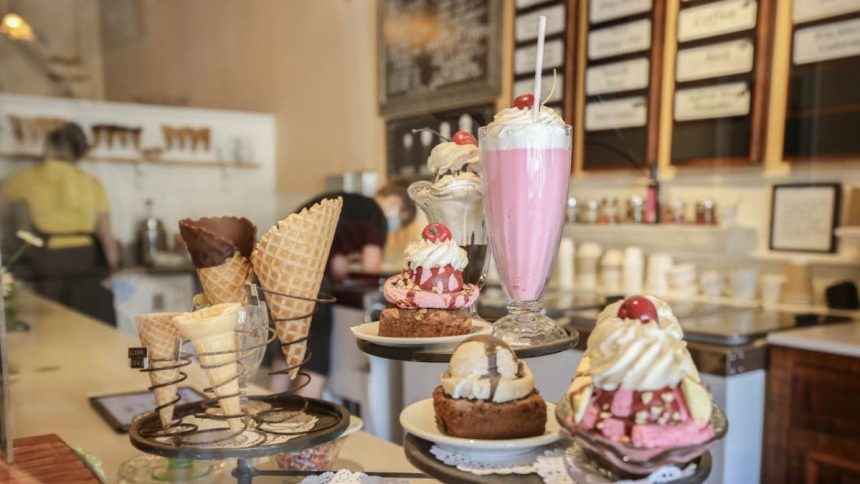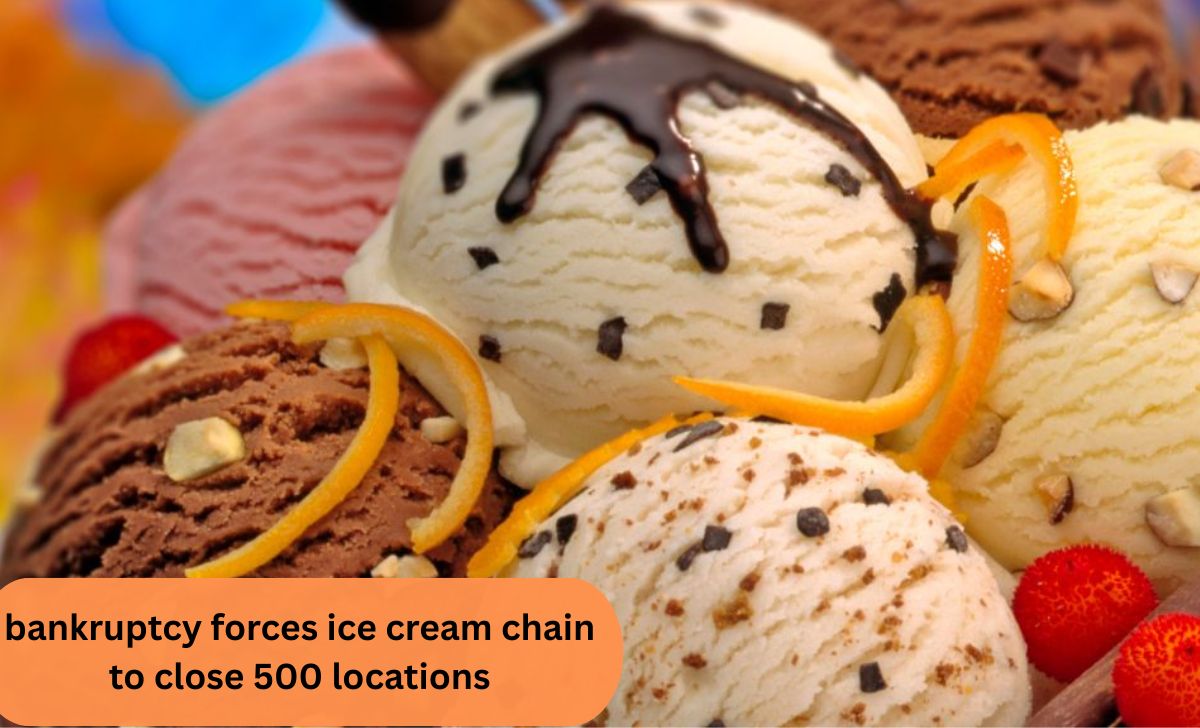In a shocking development, one of the most popular ice cream chains in the country has declared bankruptcy, forcing the closure of 500 locations. For decades, this chain was a go-to place for families, children, and dessert lovers who associated its name with joy, celebration, and comfort.
The sudden downfall of such a beloved brand has sparked intense discussions about the future of the frozen dessert industry and the challenges faced by food and beverage companies in an evolving marketplace.
The ice cream chain filed for bankruptcy due to financial struggles, forcing the closure of 500 locations, leaving employees jobless and communities without their favorite dessert spots.
In This Article We Discuss’‘bankruptcy forces ice cream chain to close 500 locations”
How Financial Struggles Led to the Ice Cream Chain’s Collapse
The company’s bankruptcy is the result of long-standing financial struggles that built up over years. The ice cream chain relied heavily on in-person store sales, which were severely impacted by reduced consumer spending and economic slowdowns.
Rent increases, utility bills, labor costs, and ingredient inflation pushed operating expenses beyond sustainable levels. Although the brand attempted discounts and limited-time offers to boost sales, the profit margins were too thin to recover from the financial strain.
The Shocking Announcement of 500 Store Closures
When the company announced that 500 stores would be shut down permanently, it shocked loyal fans and employees alike. These closures are not limited to a single region but spread across multiple states, making the impact widespread.
For many towns and neighborhoods, the ice cream shop was more than just a place to grab dessert; it was a community landmark. The sudden absence of these stores leaves a noticeable gap in both local economies and consumer lifestyles.
Timeline of the Ice Cream Chain’s Decline

The decline did not happen overnight. The brand enjoyed peak success during the late 1990s and early 2000s when frozen desserts were booming. However, cracks began to appear over the last decade as competitors entered the market with modern concepts, healthier alternatives, and stronger digital presence.
The pandemic accelerated this decline, causing a sharp drop in sales that the chain never fully recovered from. By 2025, the financial pressure had mounted so high that bankruptcy became the only viable option.
Why Bankruptcy Became the Only Option
Bankruptcy is often seen as a failure, but in many cases, it becomes a survival strategy. For this ice cream chain, bankruptcy allows the business to restructure debts, close underperforming stores, and focus resources on profitable locations.
While devastating for employees and customers, this move gives the company a chance to stabilize financially and perhaps rebuild in a leaner, more adaptable way. Without bankruptcy, the company risked complete shutdown and liquidation.
The Impact of Rising Costs on Ice Cream Businesses
One of the biggest contributors to the chain’s downfall was rising costs across the supply chain. Dairy products, sugar, cocoa, and packaging materials all saw price surges in recent years.
Energy costs also climbed, which heavily impacted ice cream businesses that rely on refrigeration and cold storage. Instead of passing the entire cost burden to customers risking reduced demand the chain absorbed too much of it, which eroded profits and led to financial collapse.
Competition in the Frozen Dessert Market Intensifies
The ice cream industry has transformed dramatically in the past decade. Boutique gelato shops, frozen yogurt outlets, and premium artisanal brands have stolen market share from traditional chains.
Additionally, grocery stores expanded their frozen dessert sections with innovative flavors and health-conscious options, making it easy for customers to enjoy quality ice cream at home. This intense competition weakened the once-dominant position of the ice cream chain.
Effects of Changing Consumer Habits on Ice Cream Sales

Consumer tastes are evolving rapidly. Today’s customers often seek healthier dessert alternatives, including low-sugar, dairy-free, vegan, and protein-rich options.
Younger generations, in particular, are willing to experiment with unique flavors and premium brands, leaving less interest in traditional offerings. The ice cream chain’s inability to modernize its menu and cater to these changing habits cost it a large share of its loyal audience.
Pandemic-Era Struggles That Left Lingering Damage
The COVID-19 pandemic left long-lasting scars on the food and beverage industry. The ice cream chain suffered heavily during this period when foot traffic plummeted, malls closed, and dine-in visits became rare.
Although digital ordering and delivery saw a rise, the chain was slow to adopt technology-driven solutions, leaving it behind competitors who thrived on online sales. Even after restrictions were lifted, the brand struggled to regain pre-pandemic sales momentum.
Employee Layoffs and the Human Cost of Bankruptcy
Perhaps the most heartbreaking aspect of this bankruptcy is the human toll. With 500 locations closing, thousands of employees from scoopers and cashiers to managers are losing their livelihoods.
For many workers, this job was a primary source of income, and the sudden closures mean financial uncertainty. Beyond wages, employees also lose access to benefits like healthcare and retirement savings, making the impact even more severe.
Communities Affected by the Sudden Store Closures
The closures affect more than just employees they ripple through communities. Local suppliers lose clients, nearby businesses lose foot traffic, and residents lose a gathering place.
The brand’s shops often served as community hubs where families celebrated birthdays, friends met after school, and locals enjoyed a treat after dinner. The absence of such spaces is felt deeply in small towns and urban neighborhoods alike.
Customer Reactions to the Loss of Beloved Ice Cream Shops

Customers have taken to social media to share their disappointment, sadness, and nostalgia. Many recall childhood memories of visiting the chain, enjoying special flavors, or celebrating milestones.
For older generations, the closures feel like losing a piece of cultural history. For younger ones, it represents fewer options in a market already dominated by premium or niche competitors. The emotional response demonstrates how food brands can become intertwined with personal and collective memories.
What Happens to Remaining Locations Still in Operation
Not all hope is lost. Some profitable stores will remain open during the restructuring process. These select locations will act as test grounds for new strategies, including menu innovation, digital ordering, and customer loyalty programs.
If successful, these stores could form the foundation of a smaller but more focused company in the future. However, their survival depends on how quickly the chain adapts to modern market demands.
Lessons for Other Food and Beverage Chains Facing Pressure
The downfall of this chain offers valuable lessons for other businesses in the food and beverage industry. Adaptability, digital innovation, and understanding consumer preferences are no longer optional; they are essential.
Chains that rely solely on brand recognition without evolving risk the same fate. Maintaining strong cash flow, diversifying sales channels, and prioritizing customer experience can make the difference between survival and bankruptcy.
Experts Analyze the Bankruptcy Filing and Its Causes
Industry experts point to a mix of factors: economic pressures, outdated strategies, and a failure to innovate. Analysts note that while external challenges like inflation and competition played a role, the company’s slow adaptation was its biggest weakness.
Financial mismanagement and poor decision making at the leadership level accelerated the decline. Many agree that the brand could have remained competitive with stronger foresight.
The Future of the Ice Cream Brand After Bankruptcy

While bankruptcy paints a grim picture, it does not necessarily mean the end of the brand. If managed properly, the restructuring process could give the company a fresh start.
By focusing on fewer but more profitable stores, introducing new product lines, and embracing e-commerce, the brand has an opportunity to regain relevance. However, the journey will be long and uncertain, requiring bold changes.
Franchise Owners Grapple With Unexpected Closures
Franchise owners are among the hardest hit. Many invested their savings into opening and running locations, only to face closure notices without warning. For these entrepreneurs, bankruptcy not only means financial loss but also broken trust in the larger corporation. The fallout from this could affect future franchise relationships across the industry.
Could the Ice Cream Chain Have Avoided Bankruptcy?

Some experts argue that bankruptcy could have been avoided with earlier action. Stronger digital marketing, delivery partnerships, healthier menu items, and innovative branding could have preserved consumer interest. However, the company waited too long to pivot, and by the time changes were considered, the financial hole was too deep.
Industry-Wide Warning Signs for Dessert and Snack Brands
This bankruptcy serves as a cautionary tale for the entire dessert and snack industry. Customer behavior is shifting faster than ever, and brands that remain stagnant risk becoming irrelevant. The closures highlight the need for continuous innovation, operational efficiency, and strong leadership.
Conclusion
The closure of 500 stores is not just the story of one ice cream brand, it is a reflection of the larger challenges facing the food industry. While painful, this bankruptcy may inspire other chains to innovate, modernize, and prioritize customer needs before it’s too late.
Whether the brand eventually recovers or disappears, its story will remain a reminder that even the sweetest success can melt away without change.
FAQs
1. Why did the ice cream chain file for bankruptcy?
The chain faced rising costs, reduced sales, strong competition, and poor adaptation to changing consumer preferences, forcing it to declare bankruptcy for survival.
2. How many locations are closing due to bankruptcy?
The company announced the closure of 500 stores across multiple states, marking one of the largest shutdowns in the ice cream industry.
3. Will all stores of the ice cream chain close?
No, some profitable stores will remain open. The company plans to restructure operations and focus on fewer locations that continue to perform well.
4. What will happen to employees after the closures?
Thousands of employees will lose their jobs. The sudden closures leave many without income, benefits, or long-term career security, deeply impacting families and communities.
5. How are customers reacting to the bankruptcy?
Customers are shocked and saddened, sharing nostalgic memories online. Many feel disappointed as beloved community ice cream spots disappear from neighborhoods and malls.
6. What caused the company’s financial downfall?
Rising ingredient costs, inflation, pandemic-era sales declines, poor digital adoption, and stronger competitors offering modern alternatives all contributed to the company’s financial collapse.
7. Can the brand survive after bankruptcy?
Yes, bankruptcy doesn’t mean the end. The chain may survive by restructuring debts, closing unprofitable stores, and modernizing its menu to attract new customers.
8. How does this affect franchise owners?
Franchise owners face significant losses after investing heavily in the brand. Many feel betrayed, as sudden closures left them financially vulnerable with no compensation.
9. What lessons does this bankruptcy teach other chains?
It shows that innovation, strong digital presence, and adapting to consumer trends are essential. Relying only on past success can lead to financial failure.
10. Will the ice cream industry be impacted by this closure?
Yes, the closure highlights the risks faced by dessert chains. Other brands may now prioritize healthier options, digital growth, and operational efficiency to avoid collapse.
Read more
Blue Lock Manga- The Ultimate Guide
Y2mate-The Ultimate Guide to Downloading and Converting Videos



